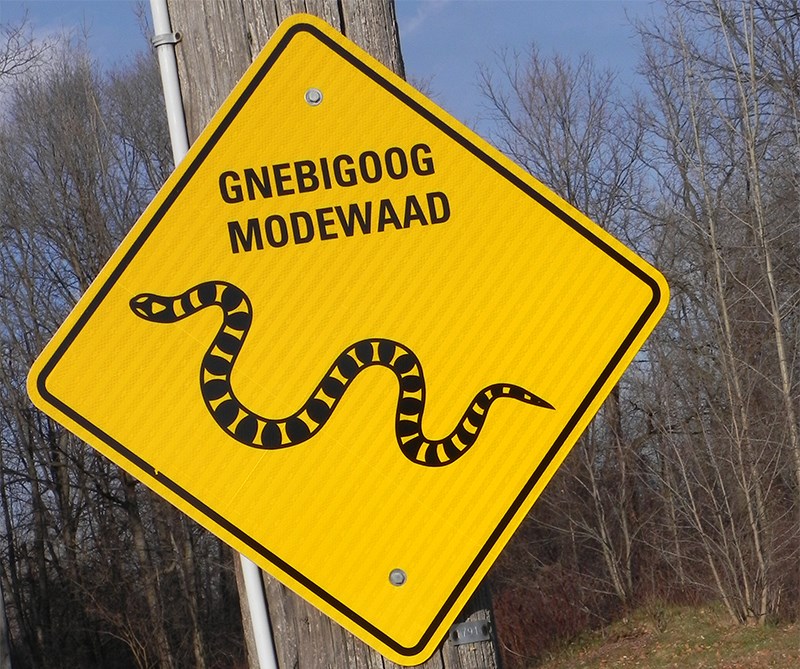Cathy Dobson
Motorists may have noticed new yellow road signs depicting turtles and snakes on River Road at the Aamjiwnaang First Nation.
So what’s up with that?
“Road mortality is a big problem for at-risk species,” says Dennis Plain, Aamjiwnaang’s lead environmental technician.
“We put the signs up a few months ago to remind people there may be turtles and snakes crossing the road. Hopefully we’ll save one or two.
“We don’t want to lose them forever.”
There’s no danger of wandering snakes and turtles during winter hibernation but the signs are a reminder to watch for all animals crossing the road year-round, said Plain.
Another 10 signs have been erected on the First Nation’s residential streets near wetlands, ditches and other places snakes and turtles live, mate and lay eggs. Some also warn these are “No Mow” zones in the summer.
Plain said the signs were purchased shortly after a study began through the Aboriginal Fund for Species at Risk. At first, the study focused on taking stock of what lives in the area.
But staff quickly saw turtle and snake populations were diminishing so fast that the emphasis should be on preservation.
In particular, there are dwindling numbers of the threatened Butler’s garter snake, a small and harmless species found in at least 62 sites in southwestern Ontario just 25 years ago.
There are now only two or three sites in Ontario, including Canatara Park and Aamjiwnaang, Plain said.
“We need to save them because they are important to the food chain. In our stories, we consider them as guardians,” he said. “Not only do they feed animals like raccoons, birds and coyotes, they also keep rodent and insect populations down.”
Residential and agricultural expansion encroaches on Butler’s snake habitat, as do invasive species like phragmites that choke out living spaces.
Where the snakes live on the First Nation isn’t disclosed.
“We don’t want them grabbed up. It’s illegal to even pick them up,” he explained.
The snakes on the road signs are accompanied with the Anishinaabemowin words: Gnebigoog Modewaad, roughly translated to say Snakes Are Here.
Environment Canada has also identified six kinds of turtles at risk in the area, including Blanding’s turtles, eastern musk (or stinkpot) turtles, northern map turtles, spiny softshell turtles, spotted turtles and snapping turtles.
Aamjiwnaang’s environment committee is especially concerned about snapping turtles, said Plain.
“It takes them about 14 years to mature and lay their eggs, so when one dies it’s a big delay in building the population.”
Since the study began, Plain and his team have retrieved baby snapping turtles found crossing the road and relocated them to ponds and creeks. They even tried to save the eggs from a dead female after she was hit on the road.
“But that was not successful,” he said.
The signs have generated a lot of questions and raised awareness about animal road morbidity, Plain added.
“I think they work. There should be signs near Canatara and the Wawanosh Wetlands too.”
